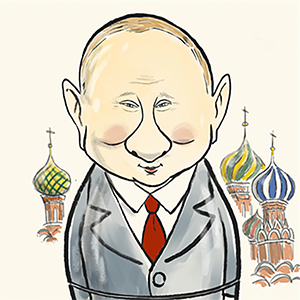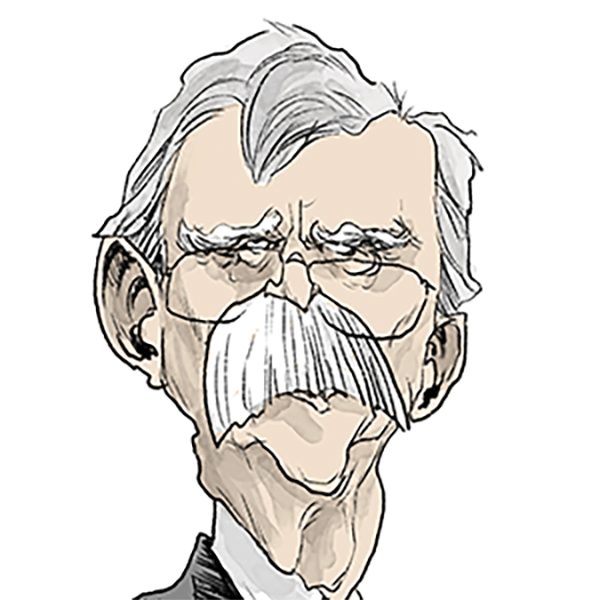Commentary: Why Israel can't just 'cut the head off' of Hamas or Hezbollah
Published in Op Eds
Since the horrific Hamas terrorist attacks of Oct. 7, 2023, Israel has been at war in the Middle East. The conflict has stretched across borders, spanning Gaza to Lebanon to Iran. Over the course of 15 months, the Israel Defense Forces and Israel’s intelligence services have taken the fight directly to Hamas and Lebanese Hezbollah, two of the most prominent members of Iran’s “Axis of Resistance.”
A dramatic Israeli intelligence operation in mid-September involved exploding pagers and walkie-talkies, resulting in the death of more than a dozen Hezbollah foot soldiers, with thousands of other people in Lebanon injured or maimed. In Gaza, the Israeli military has killed more than 17,000 Hamas fighters, a devastating blow to the group’s rank and file, affecting 22 of Hamas’ 24 battalions.
But the centerpiece of Israel’s efforts has been targeted assassinations, killing the leaders of these groups with ruthless efficiency. Hezbollah Secretary-General Hassan Nasrallah was taken out by an Israeli airstrike in late September, while Hamas’ leader, Yahya Sinwar, the architect of the Oct. 7 attack, was killed by the Israeli military in Rafah in mid-October.
Much of the conventional wisdom on counterterrorism, however, suggests that killing a terrorist leader — also known as decapitation strikes — is insufficient to defeat these groups over the long term.
Despite that, there have been numerous scholars and analysts who have published assessments suggesting that, as the Economist opined, there is “good reason to believe that this time may be different.” Respected military historian Raphael S. Cohen added his voice to those who see Sinwar’s death as highly consequential, arguing that “this incident differs from killing al-Zarqawi, al-Baghdadi, and even bin Ladin,” in reference to the leaders of al-Qaida in Iraq, the Islamic State and core al-Qaida, respectively.
Still, the empirical evidence and the broader body of research on the efficacy of decapitation strikes point to both Hamas and Hezbollah continuing to function, even in a significantly attenuated state, until both can recruit new members and rebuild their organizations.
One of the reasons it is premature to write the obituary of either Hamas or Hezbollah is that both groups are better understood as insurgent organizations, not transnational terrorist groups. What’s the difference? Terrorism is a tactic, while insurgency is a strategy. Terrorism consists of “violent, criminal attacks,” and although insurgents might use terrorism, it does not define them; an insurgency is“the organized use of subversion and violence to seize, nullify, or challenge political control of a region.” Hamas and Hezbollah have nationalist agendas interwoven with Islamist ideology, but the group’s primary members and supporters are Palestinians and Lebanese, respectively.
These groups are organic and homegrown, unlike the Islamic State or al-Qaida, which have relied heavily on fighters from abroad. This matters because foreign fighters, while zealous in many ways, are unmoored from the territory they inhabit. For most of its existence, al-Qaida was a roving band of jihadists that traveled from battlefield to battlefield, stretching from the Balkans to the Caucasus to South Asia. At its peak, the Islamic State counted 30,000 foreign fighters from 85 countries, not including those who brought along their families.
By contrast, Hamas and Hezbollah will replenish their ranks with locals — new recruits, many of whom will be catalyzed to continue their struggle after the immense devastation and humanitarian suffering wrought by Israel’s draconian approach in Gaza and Lebanon. As they have throughout their tenure, Hamas and Hezbollah will use the ongoing conflict to reinforce a cult of martyrdom in an effort to ensure that ideological and religious fervor is transmitted to younger generations. Killing leaders of the organizations does not significantly hinder this — and might even fuel radicalization.
Both Hamas and Hezbollah are part and parcel of the sociopolitical fabric in Gaza and Lebanon and will inevitably regrow their depleted ranks. Hezbollah recruits through offering jobs, education and healthcare and by providing other services to Shia in southern Lebanon. Israel’s scorched-earth approach in Gaza — where 45,000 Palestinians have been killed and the territory’s infrastructure razed to the ground — will serve as a recruiting tool for Hamas as it seeks to enlist the next wave of Palestinians, many of whom will be radicalized by the war and its aftermath. “We’ll be fighting their sons in four or five years,” remarked Yaakov Peri, the former head of the Israeli intelligence agency Shin Bet, in reference to the cycle of violence perpetuated by Israel’s ongoing assault in Gaza.
To be sure, the onslaught has been devastating to both groups. And yet, neither organization is likely to fade away. As Mideast expert Steven Cook noted after Sinwar’s death: “It is hard to kill your way out of the problem posed by a resistance movement. The committed do not get the message; they just redouble their efforts.”
In Israel, there is a famous saying about counterterrorism, which Israelis euphemistically dub “mowing the grass.” The analogy is apt because the grass always grows back. But in this latest round of fighting, over the past 15 months, Israel decided to do more than “mow the grass” — and that’s why we’re seeing scorched earth instead.
Rather than an issue to be mitigated, Israeli Prime Minister Benjamin Netanyahu and his inner circle of far-right ministers have tried to convince Israelis that the challenges of Hamas and Hezbollah could be solved once and for all. In November, speaking of Hezbollah, the prime minister said:“This is no longer the same Hezbollah. … We set it back decades.” As for Hamas, Netanyahu said the Israelis will remain in Gaza until the group is “completely destroyed.” Kim Ghattas, a journalist and regional expert, has described these objectives as “maximalist and largely unattainable.”
Indeed, the Israeli military’s pursuit of“total victory” in Gaza and Lebanon is what will guarantee the survival of Hamas and Hezbollah. After all, insurgent organizations need to be combated through counterinsurgency, not counterterrorism. The Israelis have pursued a solution entirely mismatched to the problem. Counterinsurgency involves “comprehensive civilian and military efforts designed to simultaneously defeat and contain insurgency and address its root causes.”
But Israel’s recent approach in Gaza and Lebanon contained no real plan to protect the population and no effort to “win hearts and minds.” Moreover, from the very beginning of these overlapping conflicts, Netanyahu has never attempted to offer a coherent political endgame for dealing with either Hamas or Hezbollah.
As always, war, and especially insurgency, is politics through other means. Israel’s military campaign, while impressive tactically, has relied solely on the kinetic aspects of conflict, entirely neglecting the political component, and condemning future generations on all sides to the same fate — perpetual war.
____
Colin P. Clarke is the director of research at the Soufan Group, an intelligence and security consulting firm in New York City.
©2025 Los Angeles Times. Visit at latimes.com. Distributed by Tribune Content Agency, LLC.




























































Comments